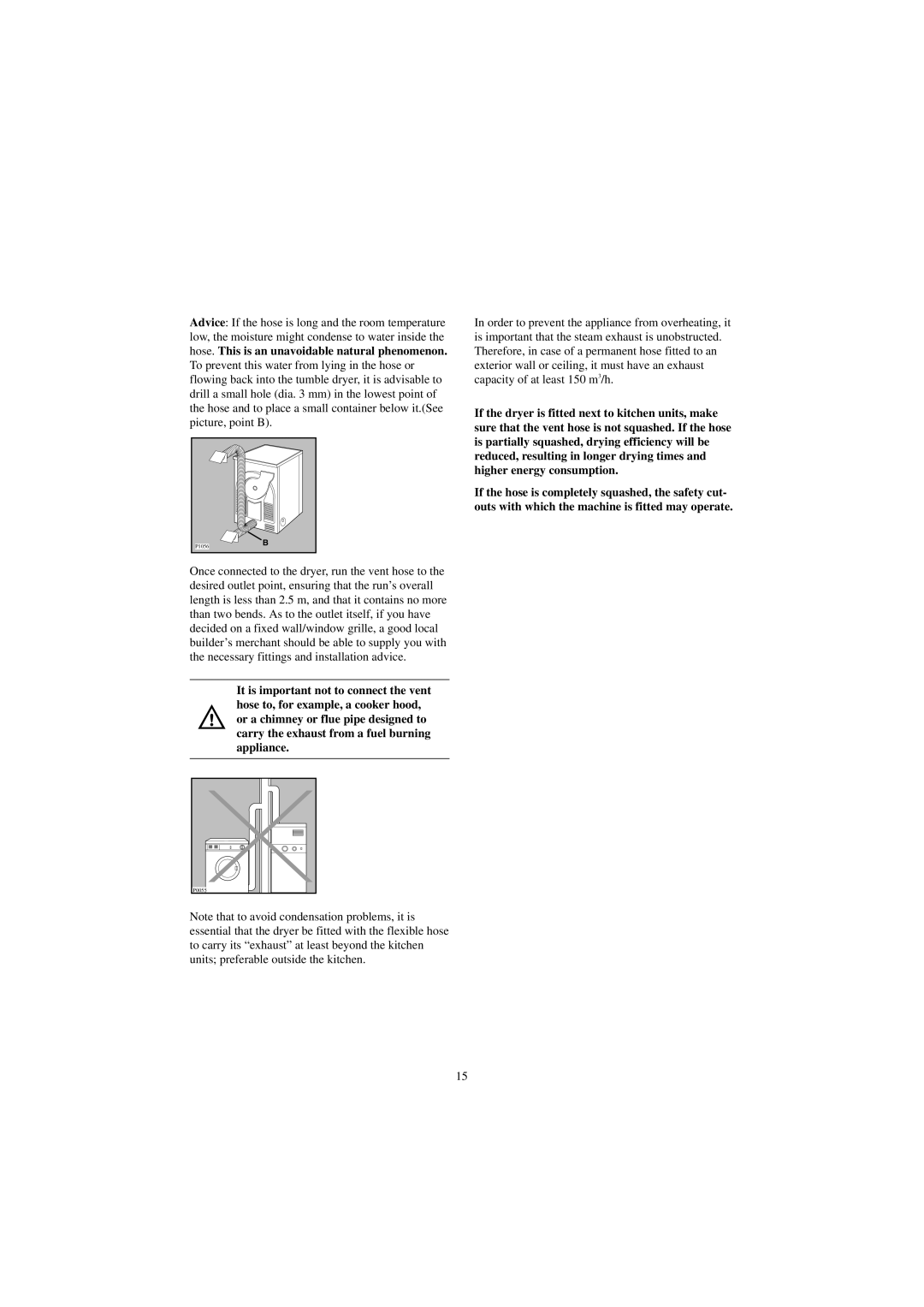TD 4100 W specifications
The Zanussi TD 4100 W is a versatile and efficient tumble dryer designed to cater to the needs of modern households. Known for its innovative technology and user-friendly features, this appliance stands out in the crowded market of laundry solutions.One of the key features of the Zanussi TD 4100 W is its condensation drying system. This allows the dryer to operate without requiring an external vent, making it ideal for apartments or homes with limited ventilation. The condensation technology works by converting moisture from the clothes into water, which is then collected in a reservoir. Users can easily monitor the water level and empty the tank when needed, ensuring efficient drying without the hassle of external ducting.
The Zanussi TD 4100 W also boasts multiple drying programs tailored to different fabric types and user preferences. Its range of options includes settings for cotton, synthetic fabrics, and delicate items, providing optimal care for your laundry. The easy-to-use control panel allows users to select the appropriate program with just a few presses, making the drying process straightforward and quick.
Additionally, the dryer features a timer function, enabling users to set the drying time according to their needs. This flexibility is particularly useful for busy families or individuals who appreciate a quick turnaround on their laundry. The appliance is designed with a large capacity drum, accommodating up to 7 kg of laundry, making it suitable for both small and larger loads.
Energy efficiency is another highlight of the Zanussi TD 4100 W. Operating on a less energy-intensive cycle, the dryer helps to minimize electricity bills while still ensuring thorough and effective drying performance. This eco-friendly design aligns with the growing demand for sustainable household appliances.
For added convenience, the dryer is equipped with a reverse tumble function that helps reduce creasing and ensures that clothes come out looking fresh and ready to wear. This technology not only aids in minimizing ironing time but also improves drying performance overall.
In summary, the Zanussi TD 4100 W combines efficiency, versatility, and user-friendly features. Its condensation drying system, multiple drying programs, energy efficiency, and convenient design make it a valuable addition to any household looking to streamline their laundry routine. Whether dealing with delicate fabrics or heavy cotton loads, this tumble dryer rises to the occasion, ensuring high-quality care for your clothes while saving both time and energy.

